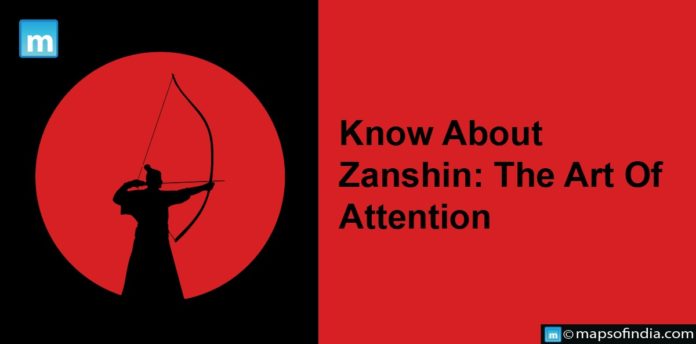There is a concept in the martial arts world that goes beyond the physical components of combat and into the domain of attention and focus. This is known as Zanshin, a Japanese phrase that translates to “the state of the remaining mind” or “the art of attention.” Zanshin, rooted in ancient martial arts philosophy, comprises a holistic approach to mindfulness and presence inside and beyond the training hall.
Understanding Zanshin
Zanshin is a multidimensional notion firmly established in Japanese martial arts, particularly Kendo, Judo, and Aikido. Zanshin, at its foundation, refers to the mental and emotional state of complete awareness and focus, even after a technique or action has been performed. It represents maintaining high awareness, alertness, and mindfulness throughout a combat confrontation.
The Three Stages of Zanshin
-
Pre-Zanshin
Practitioners are advised to establish a mental state of preparation known as pre-Zanshin before engaging in any martial exercise. Preparing the mind to be present, free of distractions, and open to developing events is part of this. It creates the conditions for peak performance and enhanced sensory perception.
-
Active Zanshin
The martial artist enters the condition of active Zanshin while performing techniques. Maintaining acute awareness of the opponent’s motions, the surrounding environment, and one’s own body is required throughout this phase. It extends beyond physical movements to keenly evaluate the opponent’s goals and emotional state. Active Zanshin keeps the martial artist versatile and receptive to shifting dynamics.
-
Post-Zanshin
The genuine essence of Zanshin emerges in the post-execution phase. Instead of relaxing or celebrating too soon after completing a technique, the martial artist must maintain a condition of post-Zanshin. This entails remaining attentive, ready for counterattacks, and poised to shift fluidly into the following action. Post-Zanshin demonstrates a dedication to continual progress and an understanding that the martial encounter is ongoing.
-
Zanshin Beyond the Dojo
Zanshin’s concepts stretch far beyond the bounds of the martial arts dojo. They provide valuable insights into how people can approach various parts of life with greater awareness and attention. In everyday situations, practicing Zanshin entails being fully present in the moment, whether during a conversation, a professional endeavor, or even a recreational activity.
-
Mindful Decision-Making
Zanshin encourages people to make decisions with clarity and focus. Individuals can make better educated and thoughtful decisions if they contemplate the repercussions of their actions and stay present.
-
Enhanced Concentration
In a world of distractions, cultivating Zanshin can help you focus and lessen the impact of outside influences. This increased focus enables people to engage more fully with their environment and experiences.
-
Resilience in Adversity
Zanshin not only prepares martial artists for unforeseen obstacles but also prepares individuals to overcome adversity in everyday life. The ability to remain calm, adaptable, and alert in adversity creates resilience and a positive outlook.
Zanshin, or the skill of paying attention, is a guiding principle in both martial arts and in life. Individuals can resolve problems with grace, make educated decisions, and create a heightened sense of awareness in their daily lives by adopting the attitude of complete attentiveness and remaining mindful in all actions.




